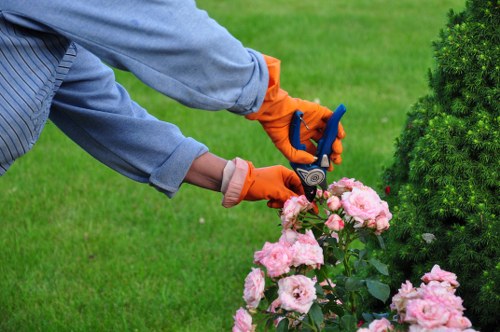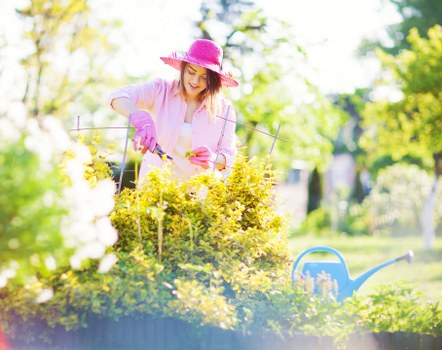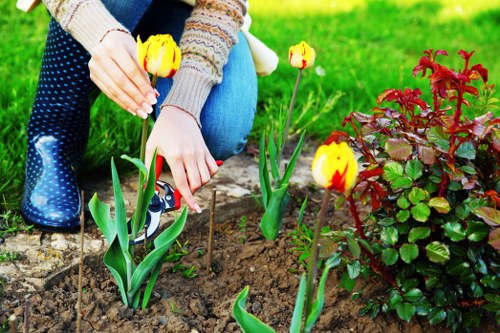Mastering Garden Fence Installation Hooks: A Comprehensive Guide

Installing a garden fence is a significant step in enhancing the beauty, security, and functionality of your outdoor space. Among the many components involved, garden fence installation hooks play a crucial role in ensuring your fence is both sturdy and aesthetically pleasing. Whether you’re a seasoned gardener or a DIY enthusiast, understanding the nuances of fence hooks can make your installation process smooth and successful.
Garden fence installation hooks come in various shapes, sizes, and materials, each designed to cater to different fencing needs and environmental conditions. From traditional wooden fences to modern metal and vinyl options, the right hook can make all the difference in the longevity and performance of your fence.
In this guide, we will explore the different types of garden fence installation hooks, provide step-by-step installation instructions, and offer maintenance tips to keep your fence in top condition. Additionally, we will highlight the best areas near Hook for garden fence installation, ensuring that you have all the information you need to embark on your fencing project with confidence.
Understanding Garden Fence Installation Hooks

Garden fence installation hooks are essential hardware used to attach fence panels securely to supporting structures such as posts or existing walls. These hooks are designed to provide stability and prevent the fence from sagging or shifting over time. Selecting the right hook is fundamental to the overall durability and appearance of your fence.
There are several types of garden fence installation hooks available, each suited for specific applications and materials:
- Metal Hooks: Known for their strength and durability, metal hooks are ideal for heavy-duty fences such as wrought iron or steel.
- Plastic Hooks: Lightweight and resistant to rust, plastic hooks are best suited for vinyl or lightweight wooden fences.
- Wooden Hooks: Traditional wooden hooks blend seamlessly with wooden fences but may require more maintenance to prevent wear and tear.
- Adjustable Hooks: These hooks offer flexibility in positioning, making them suitable for uneven surfaces or bespoke fence designs.
Choosing the right type of hook depends on the fence material, environmental factors, and the specific needs of your garden space.
Steps for Installing Garden Fence Hooks

Installing garden fence hooks requires careful planning and precise execution to ensure a strong and lasting fence. Follow these steps to achieve a professional-grade installation:
- Measure and Mark: Begin by measuring the desired height and length of your fence. Mark the positions for the fence posts and hooks accurately to ensure even spacing and alignment.
- Prepare the Posts: Dig holes for your fence posts at least 2 feet deep to provide adequate stability. Place the posts in the holes and use a level to ensure they are upright before filling with concrete or compacted soil.
- Attach the Hooks: Secure the fence hooks to the posts using screws or nails. Ensure that the hooks are aligned properly and are level to maintain a straight fence line.
- Mount the Fence Panels: Once the hooks are in place, attach the fence panels to the hooks. Adjust as necessary to ensure the panels are secure and evenly spaced.
- Secure and Test: After installation, check all connections to ensure they are tight and secure. Test the fence by applying gentle pressure to ensure it is sturdy and free from wobbling.
Taking the time to follow these steps carefully will result in a well-installed garden fence that enhances your property’s appeal and security.
Maintenance Tips for Garden Fence Installation Hooks

Regular maintenance is key to preserving the functionality and appearance of your garden fence. Here are some essential tips to keep your fence hooks in optimal condition:
- Inspect Regularly: Periodically check the hooks for signs of wear, rust, or damage. Early detection of issues can prevent costly repairs down the line.
- Clean the Hooks: Remove dirt and debris from the hooks to prevent corrosion, especially if they are made of metal. Use a mild detergent and water, and ensure the hooks are dry before reattaching the fence panels.
- Lubricate Moving Parts: If your hooks have adjustable or moving parts, apply a suitable lubricant to maintain smooth operation and prevent sticking.
- Replace Damaged Hooks: If any hooks are bent, rusted, or broken, replace them immediately to maintain the structural integrity of your fence.
- Protect from the Elements: Apply a protective coating or paint to wooden hooks to shield them from moisture and pests. For metal hooks, consider using a rust-resistant paint or sealant.
Consistent maintenance not only extends the life of your garden fence but also ensures it remains an attractive feature of your outdoor space.
Choosing the Right Materials for Your Garden Fence

The material you choose for your garden fence has a significant impact on its appearance, durability, and maintenance requirements. Here are some popular options to consider:
- Wood: Offers a classic and natural look, ideal for traditional gardens. Wooden fences can be customized with various finishes but require regular maintenance to prevent rot and pests.
- Vinyl: Low-maintenance and resistant to weathering, vinyl fences come in a variety of colors and styles. They are easy to clean but may not offer the same strength as metal options.
- Metal: Includes options like wrought iron, aluminum, and steel. Metal fences are highly durable and provide excellent security. They can be ornate or simple, depending on your design preferences.
- Composite: Made from a blend of wood fibers and plastic, composite fences offer the look of wood with enhanced durability and lower maintenance requirements.
- Bamboo: Eco-friendly and unique, bamboo fences provide a tropical aesthetic. They are best suited for areas with moderate weather conditions.
Consider your garden’s style, climate conditions, and maintenance preferences when selecting the right material for your fence.
Local Considerations: Garden Fence Installation in Hook Areas

When installing a garden fence in the Hook region, it’s essential to consider the local climate, soil conditions, and aesthetic preferences. Here are some of the closest areas to Hook where garden fence installation hooks are in high demand:
- Biggin Hill Just a few miles from Hook, Biggin Hill residents prefer sturdy metal hooks to withstand the windy climate.
- Fleet: Known for its lush gardens, Fleet homeowners often opt for wooden hooks that complement their natural landscape.
- Yateley: With a mix of urban and rural settings, Yateley offers diverse fencing needs, from vinyl to composite materials.
- Hartley Wintney: This area favors decorative metal hooks that add a touch of elegance to garden fences.
- Chobham: Chobham’s lush greenery makes bamboo hooks a popular choice among eco-conscious homeowners.
- Darby Green: Residents here tend to select adjustable hooks for custom fence designs that match their unique garden layouts.
- Fleet Pond: Proximity to water bodies means corrosion-resistant hooks are essential to prevent rust and damage.
- Blackwater: With its open spaces, Blackwater often sees large fencing projects requiring heavy-duty hooks for enhanced security.
- Stubbington: Stubbington homeowners appreciate easy-to-install plastic hooks for their low-maintenance vinyl fences.
- West End: The West End’s aesthetic-focused gardens benefit from ornate hooks that serve as both functional and decorative elements.
- The Moor: The Moor’s diverse terrain requires hooks that can adapt to uneven surfaces and varied fence heights.
- Meadway: In Meadway, durability is key, with residents choosing metal hooks that can withstand seasonal changes.
- Cedar Green: Cedar Green’s natural beauty is complemented by wooden hooks that blend seamlessly with the environment.
- Warblington: Warblington's traditional homes often feature classic fence hooks that match the architectural style.
- West Heath West Heath homeowners prioritize eco-friendly materials, making composite hooks a popular choice.
Understanding the specific needs and preferences of each area near Hook can help you select the most suitable garden fence installation hooks for your project.
Benefits of Using High-Quality Garden Fence Installation Hooks

Investing in high-quality garden fence installation hooks offers numerous advantages that enhance both the functionality and visual appeal of your fence:
- Durability: Quality hooks are built to last, resistant to weather elements such as rain, wind, and sunlight, reducing the need for frequent replacements.
- Strength: Strong hooks ensure that your fence panels remain securely in place, providing reliable support and preventing sagging.
- Aesthetic Appeal: High-quality hooks come in various designs and finishes, allowing you to choose options that complement your garden’s style.
- Ease of Installation: Premium hooks are designed for straightforward installation, saving you time and effort during the setup process.
- Low Maintenance: Durable materials reduce the need for regular upkeep, allowing you to enjoy your garden without constant repairs.
- Enhanced Security: Sturdy hooks contribute to a more secure fence, deterring intruders and protecting your property.
Choosing the right hooks not only ensures a robust and attractive fence but also provides long-term value by minimizing maintenance costs and maximizing durability.
Common Mistakes to Avoid During Installation

Proper installation of garden fence hooks is crucial for the longevity and stability of your fence. Avoid these common mistakes to ensure a successful project:
- Incorrect Hook Placement: Misaligned hooks can cause the fence panels to be uneven or unstable. Always double-check measurements and levels before securing hooks.
- Using Inappropriate Hook Material: Selecting hooks that are not suitable for your fence type or local climate can lead to premature wear and failure. Match the hook material to your fence and environmental conditions.
- Skipping Post Preparation: Neglecting to properly set and secure fence posts can compromise the entire fence structure. Ensure posts are firmly anchored and leveled.
- Overloading Hooks: Exceeding the weight capacity of your hooks can cause breakage or sagging. Choose hooks that can support the weight of your fence panels.
- Neglecting Maintenance: Failing to regularly inspect and maintain your hooks can result in unnoticed damage and reduced fence performance. Incorporate maintenance into your routine.
- Poor Quality Hardware: Using low-quality screws or nails can undermine the stability of your fence. Invest in high-quality hardware for secure connections.
Being mindful of these potential pitfalls will help you achieve a strong and aesthetically pleasing garden fence that stands the test of time.
Innovative Solutions for Modern Garden Fences

The gardening world is constantly evolving, and so are the solutions for garden fencing. Modern advancements offer innovative hooks and installation techniques that cater to contemporary garden designs and sustainable practices:
- Smart Hooks: Incorporate technology with hooks that include sensors to monitor fence integrity and alert you to any issues.
- Eco-Friendly Materials: Utilize hooks made from recycled or sustainable materials to reduce your environmental footprint.
- Modular Systems: Opt for modular fencing systems that use interchangeable hooks, allowing for easy updates and customization.
- Integrated Lighting: Some hooks come with built-in lighting options, enhancing the functionality and ambiance of your garden space.
- Decorative Enhancements: Choose hooks with decorative elements such as ornamental tops or unique finishes to add a touch of artistry to your fence.
Embracing these innovative solutions can elevate the functionality and aesthetic of your garden fence, making it a standout feature in your outdoor environment.
Conclusion

Installing a garden fence is a rewarding project that enhances the beauty and security of your outdoor space. By understanding the importance of garden fence installation hooks and selecting the right type for your specific needs, you can ensure a durable and attractive fence that complements your garden. Remember to consider local factors and maintenance practices to maximize the longevity and performance of your fence.
With the right hooks and a careful installation process, your garden fence will not only serve its functional purpose but also add significant value and charm to your property. Whether you’re enhancing a small backyard or securing a large garden area, the principles outlined in this guide will help you achieve a successful and lasting fence installation.
Embrace the process, choose quality materials, and enjoy the transformed beauty and functionality of your newly installed garden fence.
Frequently Asked Questions
1. What are the best materials for garden fence installation hooks?
Answer: The best materials for garden fence installation hooks depend on the type of fence and local climate. Metal hooks, such as galvanized steel or aluminum, are durable and suitable for heavy-duty fences. Plastic hooks are lightweight and resistant to rust, making them ideal for vinyl or lightweight wooden fences. Wooden hooks blend well with natural fences but may require more maintenance.
2. How do I maintain my garden fence installation hooks?
Answer: Regular maintenance includes inspecting hooks for signs of wear or damage, cleaning them to remove dirt and debris, lubricating any moving parts, and applying protective coatings to prevent rust or rot. Replace any damaged hooks promptly to maintain the fence's stability and appearance.
3. Can I install garden fence hooks myself, or should I hire a professional?
Answer: Many garden fence hooks can be installed by DIY enthusiasts with basic tools and knowledge. However, for more complex installations or if you’re unsure about the process, hiring a professional can ensure the job is done correctly and safely.
4. How often should I replace my garden fence installation hooks?
Answer: The replacement frequency depends on the material and environmental conditions. Metal hooks may last several years with proper maintenance, while wooden hooks might need replacement sooner due to wear and weather exposure. Regular inspections will help determine when replacement is necessary.
5. What should I consider when choosing garden fence installation hooks for different fence types?
Answer: Consider the weight and material of your fence, the local climate, and the aesthetic you want to achieve. Ensure the hooks are compatible with your fence type, provide adequate support, and complement the overall look of your garden. Additionally, consider the ease of installation and maintenance requirements.